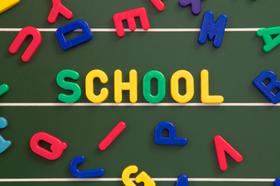For the 2025 school year, there are 4 public charter schools serving 1,424 students in Horizon Montessori School District. This district's average charter testing ranking is 7/10, which is in the top 50% of public charter schools in Texas.
Public Charter Schools in Horizon Montessori School District have an average math proficiency score of 37% (versus the Texas public charter school average of 38%), and reading proficiency score of 49% (versus the 49% statewide average).
Minority enrollment is 94% of the student body (majority Hispanic), which is more than the Texas public charter school average of 88% (majority Hispanic).
Overview
This School District
This State (TX)
# Schools
4 Schools
1,068 Schools
# Students
1,424 Students
487,146 Students
# Teachers
101 Teachers
29,208 Teachers
Student : Teacher Ratio
14:1
14:1
Student By Grade
District Rank
Horizon Montessori School District, which is ranked #705 of all 1,196 school districts in Texas (based off of combined math and reading proficiency testing data) for the 2022-2023 school year.
Overall District Rank
#705 out of 1202 school districts
(Bottom 50%)
(Bottom 50%)
Math Test Scores (% Proficient)
37%
44%
Reading/Language Arts Test Scores (% Proficient)
48%
51%
Science Test Scores (% Proficient)
25-29%
46%
Students by Ethnicity:
Diversity Score
0.33
0.56
% American Indian
n/a
n/a
% Asian
4%
5%
% Hispanic
81%
64%
% Black
7%
17%
% White
6%
12%
% Hawaiian
n/a
n/a
% Two or more races
2%
2%
All Ethnic Groups
District Revenue and Spending
The revenue/student of $10,383 in this school district is less than the state median of $13,387. The school district revenue/student has declined by 10% over four school years.
The school district's spending/student of $8,880 is less than the state median of $14,116. The school district spending/student has declined by 10% over four school years.
Total Revenue
$15 MM
$74,029 MM
Spending
$13 MM
$78,063 MM
Revenue / Student
$10,383
$13,387
Spending / Student
$8,880
$14,116
Best Horizon Montessori School District Public Charter Schools (2025)
School
(Math and Reading Proficiency)
(Math and Reading Proficiency)
Location
Grades
Students
Rank: #11.
Horizon Montessori - Stem Academy
Charter School
(Math: 50-54% | Reading: 65-69%)
Rank:
Rank:
9/
Top 20%10
320 N Main St
Mcallen, TX 78501
(956) 631-0234
Mcallen, TX 78501
(956) 631-0234
Grades: PK-8
| 342 students
Rank: #22.
Horizon Montessori Iii - Stem Academy
Charter School
(Math: 35-39% | Reading: 50-54%)
Rank:
Rank:
6/
Top 50%10
2802 S 77 Sunshine Strip
Harlingen, TX 78550
(956) 423-8207
Harlingen, TX 78550
(956) 423-8207
Grades: PK-8
| 334 students
Rank: #33.
Horizon Montessori Pearland - Stem Academy
Charter School
(Math: 35-39% | Reading: 35-39%)
Rank:
Rank:
3/
Bottom 50%10
2319 N Grand Blvd
Weslaco, TX 78596
(281) 485-2500
Weslaco, TX 78596
(281) 485-2500
Grades: PK-8
| 401 students
Rank: #44.
Horizon Montessori Ii - Stem Academy
Charter School
(Math: 20-24% | Reading: 35-39%)
Rank:
Rank:
2/
Bottom 50%10
1223 Sugarcane Dr
Weslaco, TX 78596
(956) 969-0044
Weslaco, TX 78596
(956) 969-0044
Grades: PK-8
| 347 students
Recent Articles

The 15 Biggest Failures of the American Public Education System
The world is in a constant state of change and those who fail to adjust fall behind. Unfortunately, the American public education system has not kept up with the times and is currently facing a number of serious problems. Keep reading to learn about the biggest failures affecting the modern U.S. public education system as well as some of the trends that could spark change.

Florida Governor Calls for More Funding for State鈥檚 Public School System
Florida Governor Rick Scott has introduced a state budget for next year that pumps one billion more dollars into the public school system. We鈥檒l look at his reasons for the increase and the responses to the proposal.

Can Your Child鈥檚 School Meet the National Standards?
The article discusses the challenges public schools face in meeting national educational standards. It examines current performance trends, identifies key issues affecting student achievement, and explores potential solutions for improving academic outcomes across U.S. public schools.





